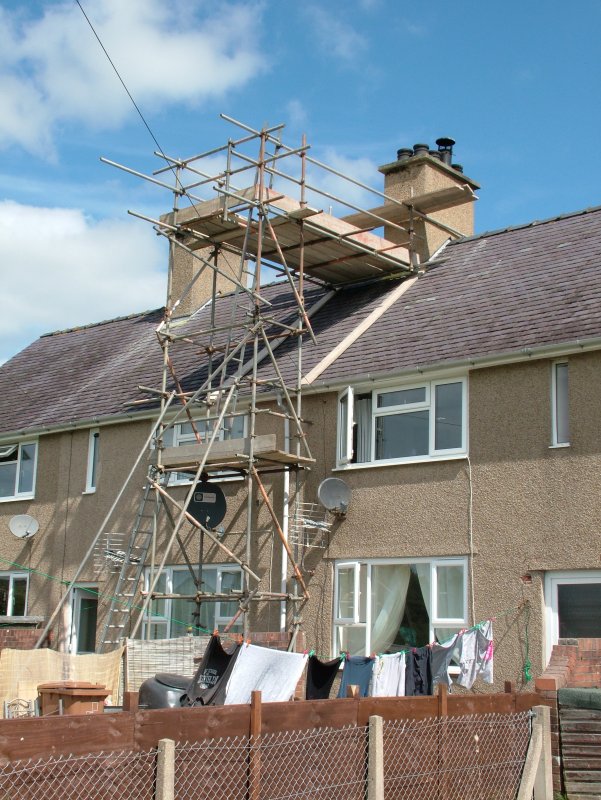
Honey bee colony removal from chimney, Penrhos, Pwllheli, 3 August 2011
The colony is believed to have entered the chimney on 9 July.
The client arranged for scaffolding which was installed in the back garden of No.3 in the terrace on 2 August 2011.

3 August 2011
Below: The bees were entering through an 'elephant's foot' cap on the pot at the southernmost end of the south east side of the stack. The flue probably connects to a disused fireplace in the bedroom of No. 2 in the terrace.
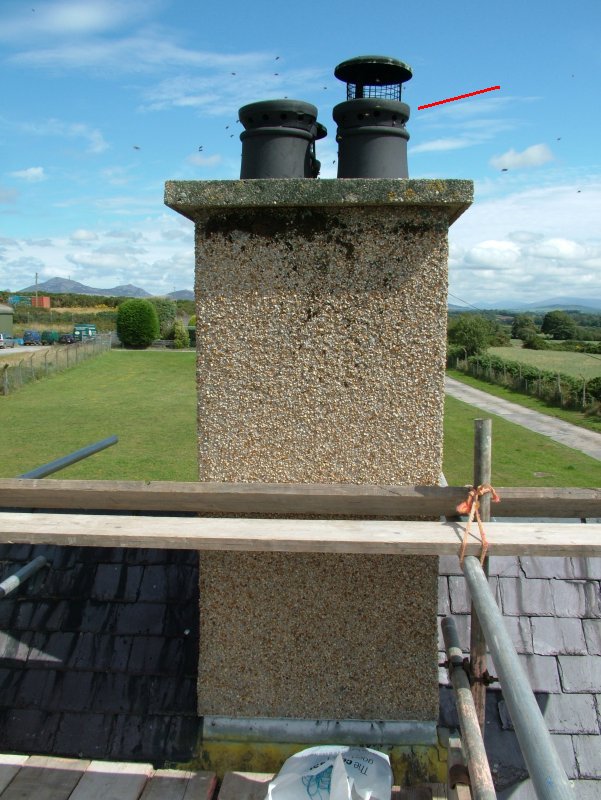
Below: before work commences, three disused flues with elephant's foot caps were covered over with plastic bags to prevent bees entering them. The bags were left in place for several days after the nest was removed.
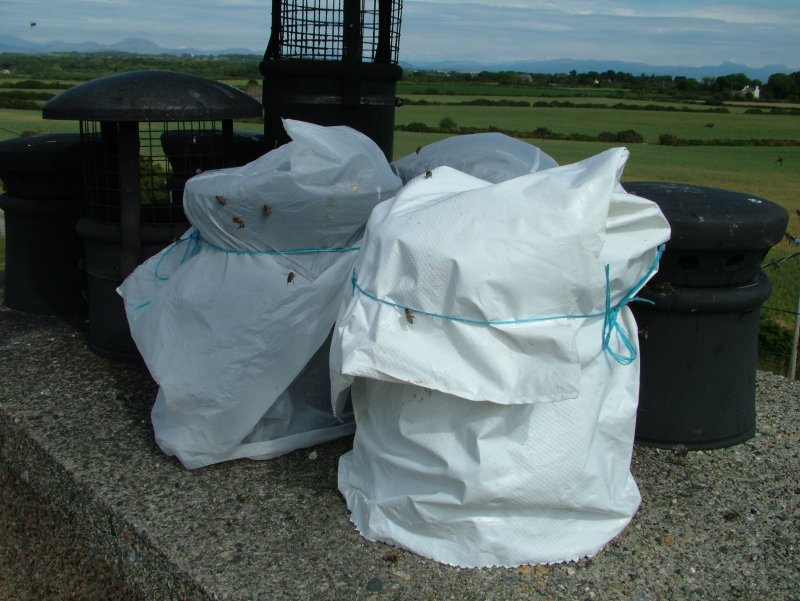
Below: The nest was attached to the lower rim of the cap, to the sides of the pot and to a small extent to the upper end of the flue.
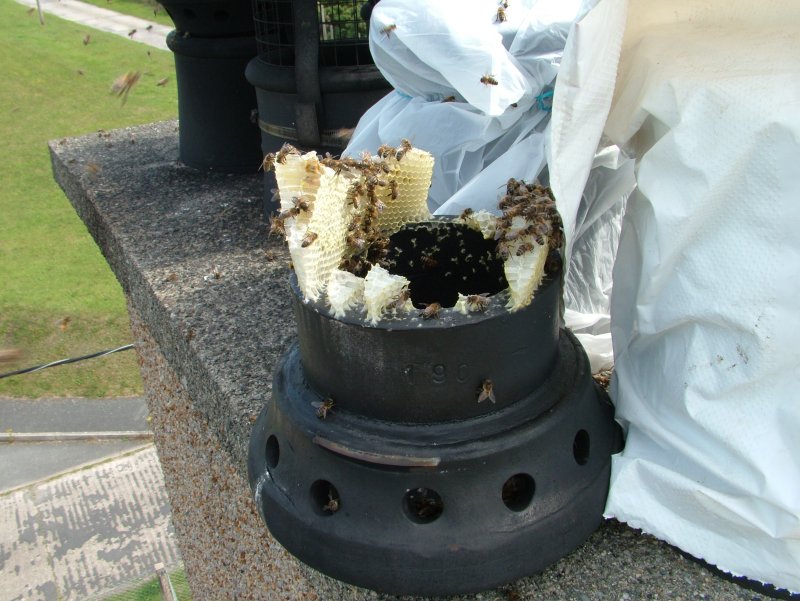
Below: top of nest showing bees scenting with abdomens pointing outwards. The light tip to the abdomen is the exposed Nasonov gland emitting pheromone attractant to guide bees in after the disruption of the cap being removed. One pollen carrier is visible to the middle right of the picture..
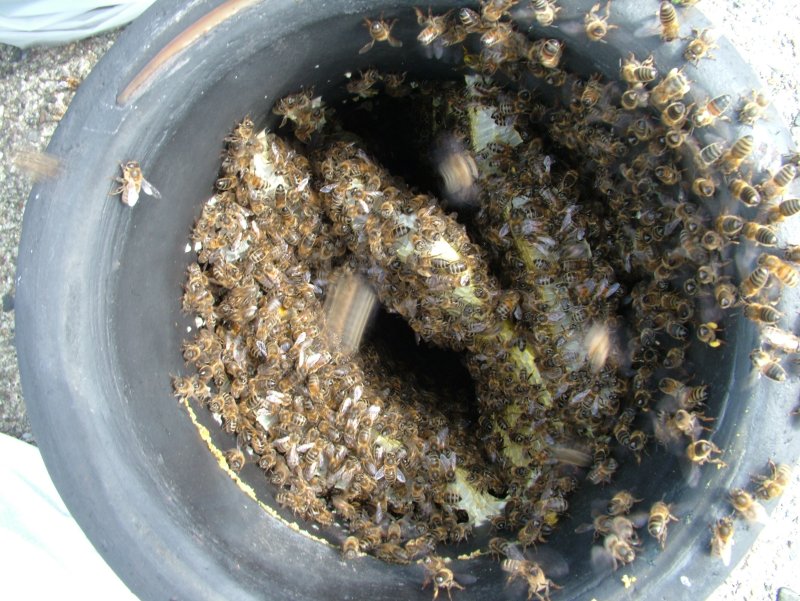
Below: close-up of top of nest. One drone is visible a little above the middle of the photo.
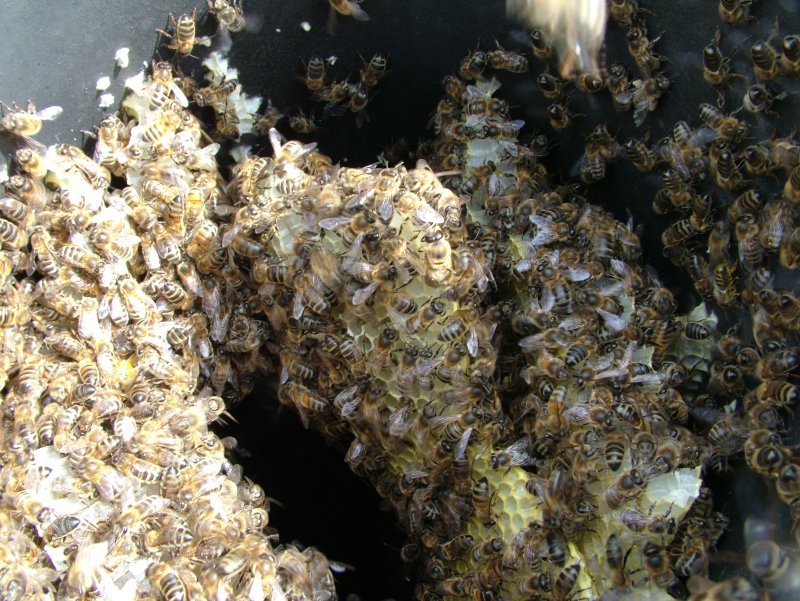
Below: comb removed, resting on comb catcher, ready for tying to hive bars. This comb was about 16 inches (400 mm) long.
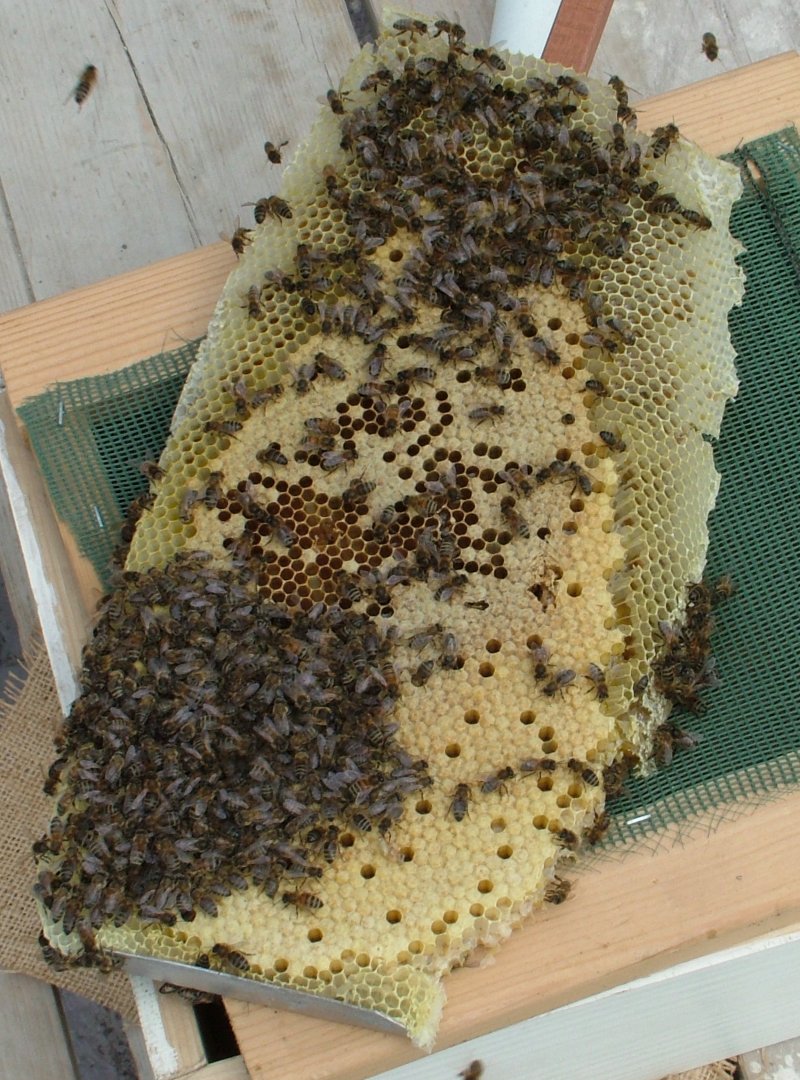
Below: cutting the comb to fit the hive.
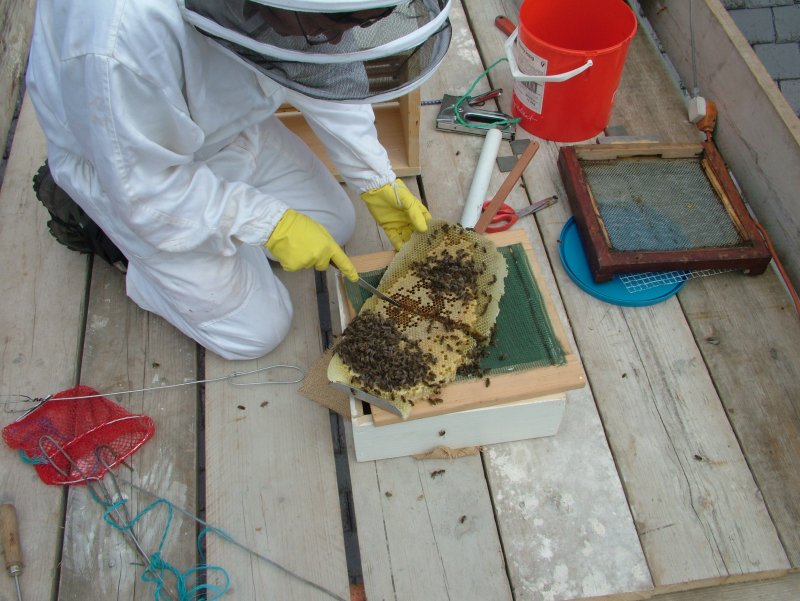
Below: Warré frame fitted with small nails (frame nails) and rubber bands ready to receive cut comb.
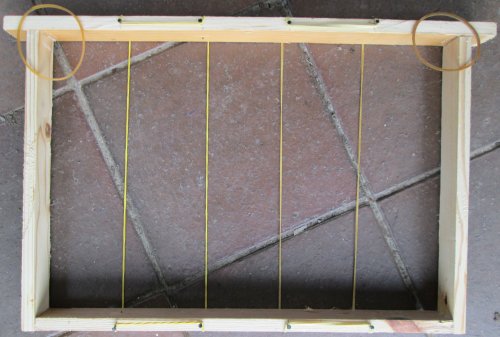
Below: after the combs were removed, bees still in the chimney were removed with a bee vacuum which takes the bees alive with surprisingly few casualties.
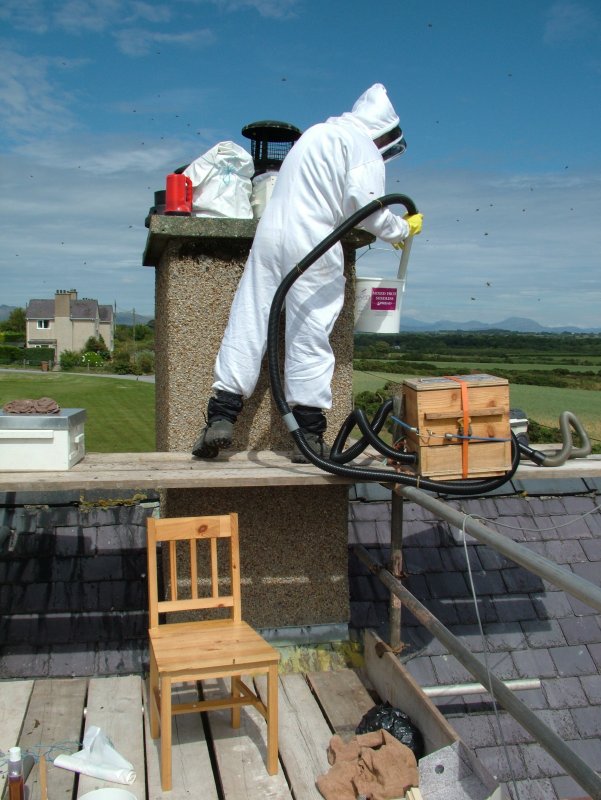
Below: view inside pot after nest removal
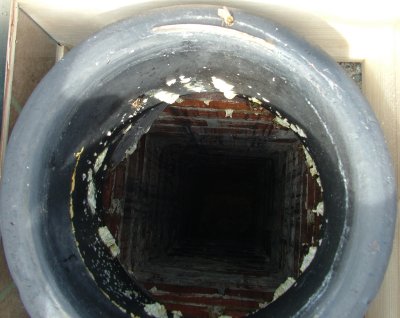
Below: a comb detached spontaneously after the cap was removed and a further comb fell during removal. Both took a considerable number of bees with them. These were taken into the bee vacuum using a long tube attachment.
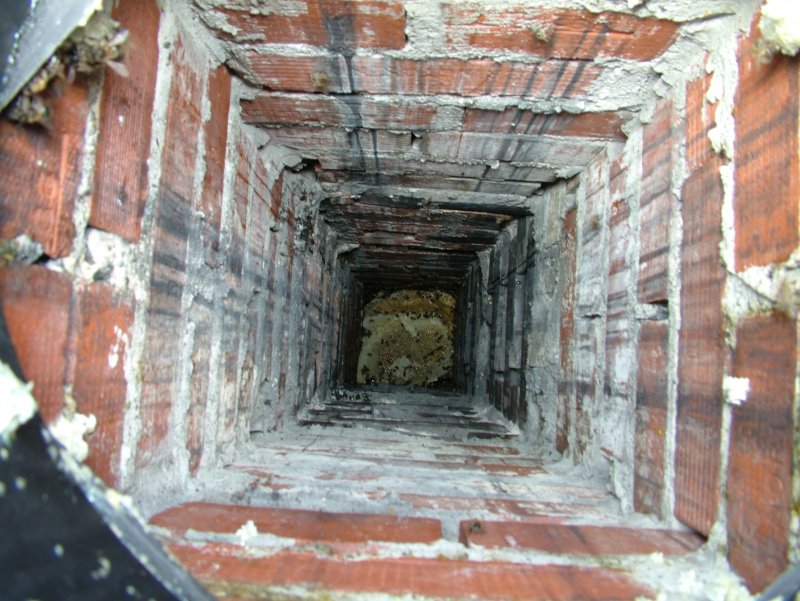
Below: the elephant's foot cap was fitted with a bee-proof mesh. Before replacing, some drops of Dettol and 'Bee Go' both repellent to bees, were put in the cap.
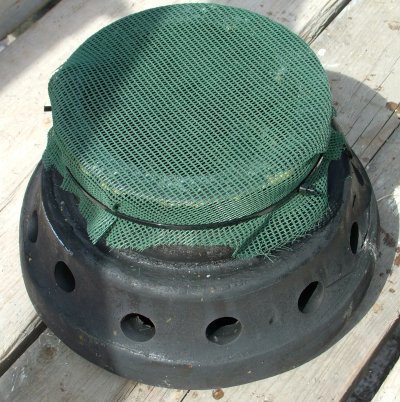
Below: foragers were continuing to return from the field after the cap was replaced.
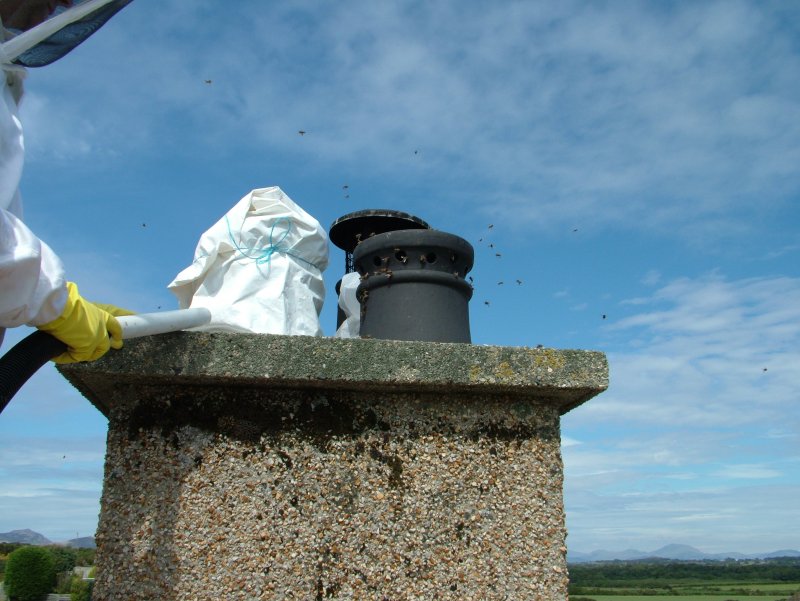
8 August 2011
The client requested that all five remaining disused flues on this 8-flue stack have their caps insect-proofed in the manner shown above. Only a couple of dozen bees were found at the stack on returning after an absence of five days.
Recommendation
After any work on chimney stacks, disused flues should be bee-proofed either in the way illustrated in the photo immediately above, or by fitting a ventilated cap with a built-in insect mesh, for example C-Cap.
David Heaf's bee removals index